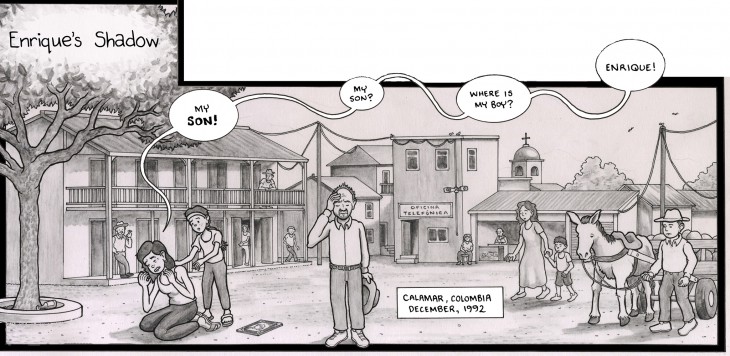Drawn together: The plight of the missing
The International Day of the Disappeared is marked on 30 August. But why isn't more being done to resolve the fate of so many people?
For a few hours there will be news stories about the 'missing'. Tragic stories, testimony from different parts of the world. Then the dust will settle, the tears will dry and the world will carry on. Just like every year.
But for thousands and thousands of families who have lost someone, the tears will not dry and they will not just carry on. They will try to continue living with the pain, of the searing uncertainty, of not knowing what happened to their loved ones.
The vice president of the ICRC, Ms Christine Beerli, was in South Sudan earlier this year where she met some families of the missing:
'It was heart-breaking to witness their suffering. You could see the pain in their eyes. Just not knowing where their loved ones were. And, of course, this pain is replicated in so many people, in so many places around the world.'
'So many mothers, fathers and children hoping, day and night, that they will once again hear the footsteps of their loved one and see them entering the door of their home again," said Ms Beerli.
'Disturbing indifference'
Hundreds of thousands of people are currently missing around the world: those who disappeared during armed conflict or other situations of violence, natural disasters or migration.
The ICRC does much to help; tracing people; identifying remains; supporting families; reminding States of their obligations in clarifying the fate of the missing.
But, for the president of the ICRC, Peter Maurer, there remains a 'disturbing indifference' about the issue:
"Disappearances are often a sensitive social and political issue, but that is no excuse for inaction. Governments must generate the political will necessary to provide answers."
"Steps must be taken to prevent disappearances, and to collect all the information available when people do disappear, because, at some point, this information might help bring answers to families and other loved ones," says Mr Maurer.
Raising awareness in new ways

This year, the ICRC, marked the International Day of the Disappeared with a series of films and reports from around the world. It also commissioned a special comic book story telling the true story of a family from Colombia. The comic book was produced by the company PositiveNegatives.
Its director, Dr Benjamin Dix, says the advantage of visual storytelling is that it engages audiences of all ages, backgrounds and levels of literacy. In the digital world we live in, comics are also highly 'shareable' through social media, combining narrative and visual media.
Narratives are adapted directly from first-hand interviews. Illustrations are based on photographs taken during field research.
"In this case, we worked very closely with the ICRC Colombia delegation who identified three families in Colombia to interview and sent us an overview of their stories. We then chose one which we felt was the most compelling story for the particular objectives of this project," says Dix.
The story focuses on the disappearance of the son and was made with the cooperation and agreement of the family.
It is a creative way of raising awareness of the subject of the 'missing' but told through just one case example. The comic-book style offers a number of advantages, not least providing anonymity to what can be a very sensitive subject. And the comic method has other advantages:
"In photography and film, we can feel compassion and empathy about the subject but they might not 'look' or 'sound' like us. In a comic, we are viewing an illustration and we hear the story in our own voice (in our head)," says Dix. "Many studies have shown that we therefore lessen the 'othering' of a testimonial comic book character and build empathy that he/she could be me or a loved one."
Read our comic collaboration with PositiveNegatives, "Enrique's Shadow."
